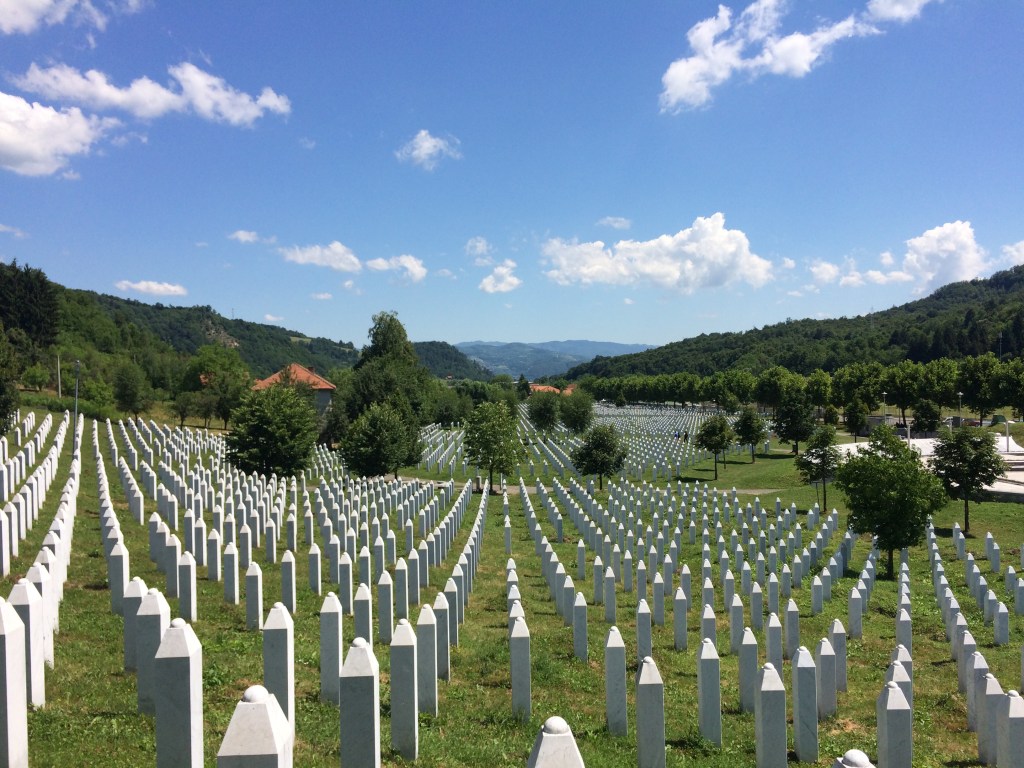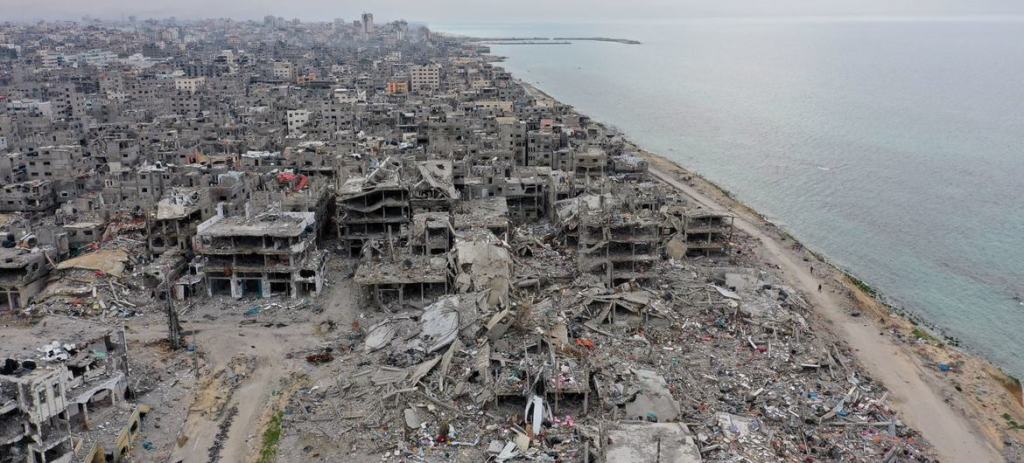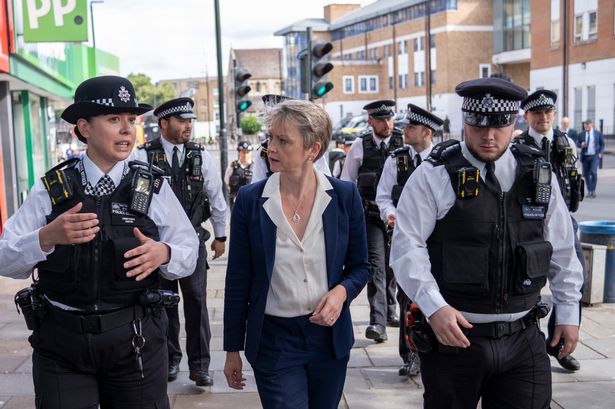by Mo Saqib Follow @mo_saqib
 I spent an evening with 31-year-old Ahmed Hrustanovic, an imam at Srebrenica’s main mosque. We sat with our iced teas on the balcony of Hotel Alic next door, with a lovely view of the surrounding hills and overlooking the town. Ahmed had earlier that day received a phone call from a friend.”They found my brother’s hand and my other brother’s skull. Should I bury them or wait a few more years until more body parts are found?” The remains had just been identified by authorities still working to find every victim of the Srebrenica genocide twenty-two years after it took place. Ahmed’s friend decided not to bury them in the end, and to wait until more had been found. How many years this will take is anyone’s guess.
I spent an evening with 31-year-old Ahmed Hrustanovic, an imam at Srebrenica’s main mosque. We sat with our iced teas on the balcony of Hotel Alic next door, with a lovely view of the surrounding hills and overlooking the town. Ahmed had earlier that day received a phone call from a friend.”They found my brother’s hand and my other brother’s skull. Should I bury them or wait a few more years until more body parts are found?” The remains had just been identified by authorities still working to find every victim of the Srebrenica genocide twenty-two years after it took place. Ahmed’s friend decided not to bury them in the end, and to wait until more had been found. How many years this will take is anyone’s guess.
The massacre may have taken place in July 1995 but for the families who were affected, the trauma continues, as they seek the remains of those who were killed. On hearing that a peace agreement might be reached to end the conflict, what became the Dayton Accords signed in November 1995, Serb forces tried to cover up what had happened by relocating many bodies. Known locally as “secondary graves”, this has meant that parts of the same body can be found over many different sites. In one case, parts from the same body were identified in two sites that were 30km apart. But due to being moved, many secondary graves have still not been found. Of the 8,372 Muslim men and boys killed by pro-Serb forces, the local memorial has 6,504 graves. Nearly 2,000 bodies have yet to be found or identified. Until this happens, there will be no closure or peace for these families in particular. People who have spent every day of 22 years wondering, when will they find my loved one’s body? Will it be within my lifetime? How did they die and where does their body rest?
Due to the pioneering work of the International Commission on Missing Persons, set up by then US President Bill Clinton following the Bosnian war, and the Missing Persons Institute of Bosnia and Herzegovina, the remains of the victims continue to be found and identified every year. Burials take place annually on 11th July, the date Srebrenica fell to the Bosnian Serb Army and now regarded as the anniversary of the genocide. On 11 July this year, 70 more bodies are being buried. But for the relatives of some 1,800 victims, the wait will stretch into a 23rd year at least.
The genocide is not over for the town’s residents who have grown up without a father, mother, or both. Ahmed was a boy when he lost his father Rifat Hrustanovic, and uncles Hajrudin and Hazim. All three were part of what’s known as “the column”. Between twelve and fifteen thousand men and boys realised they would risk capture by Bosnian Serb forces if they left Srebrenica for the Dutch UN compound three miles north in Potocari. They decided instead to head through the steep, forested hills and march to the free territory of Tuzla, about 55 miles north-west of Srebrenica. When the Bosnian Serb general Ratko Mladic learnt about the column, he ordered shells be fired at the men. Due to this shelling, exhaustion, ambushes, and Serb forces wearing UN uniforms to entice the men out, only about 5,000 men and boys made it to Tuzla after five days of non-stop walking. Rifat, Hajrudin and Hazim sadly did not. Rifat’s wife would later give birth to a son, Ahmed’s younger brother, who has never known his father. Ahmed is now married with three young children who will never meet their grandfather.

It is easy to forget but crucial to remember that many Bosnian Serbs still live in Srebrenica. This includes those who collaborated in the genocide and also those who choose to deny the genocide (despite the 6,504 graves up the road). Srebrenica is a tiny town, where everyone knows everyone. How must it feel to walk past someone on the street who you know either took part in what happened or denies it? Or to walk past them in the local supermarket? Yet collaborators and denialists live their lives as normal. Such denialism has also been legitimised by the government in neighbouring Serbia, which has stopped short of using the word “genocide” to refer to the Srebrenica massacre.
For locals like Ahmed, the legacy of the genocide will continue once their children start going to schools. How will Bosnian Muslim and Bosnian Serb children mix? What will be said in the playground and what questions will the children come home with? How will Ahmed answer those questions? How, if at all, will teachers discuss the genocide in classrooms?
Every year at genocide commemorations, whether the Holocaust, Srebrenica or other mass killings, we are used to seeing politicians and others say “never again”. Yet with anti-Semitic and anti-Muslim attacks on the rise, being legitimised by a US President instigating a Muslim ban, and other politicians including ours in the UK who refuse to see the danger of this rhetoric we are reminded of how we must work for this “never again”, it will not come to us easily.
All work published on Media Diversified is the intellectual property of its writers. Please do not reproduce, republish or repost any content from this site without express written permission from Media Diversified. For further information, please see our reposting guidelines.
Mo Saqib is a former parliamentary researcher and now works in the field of zero emission technologies. He tweets on @mo_saqib and instagrams his travels on mo.saqib2016










Leave a reply to missimontana Cancel reply